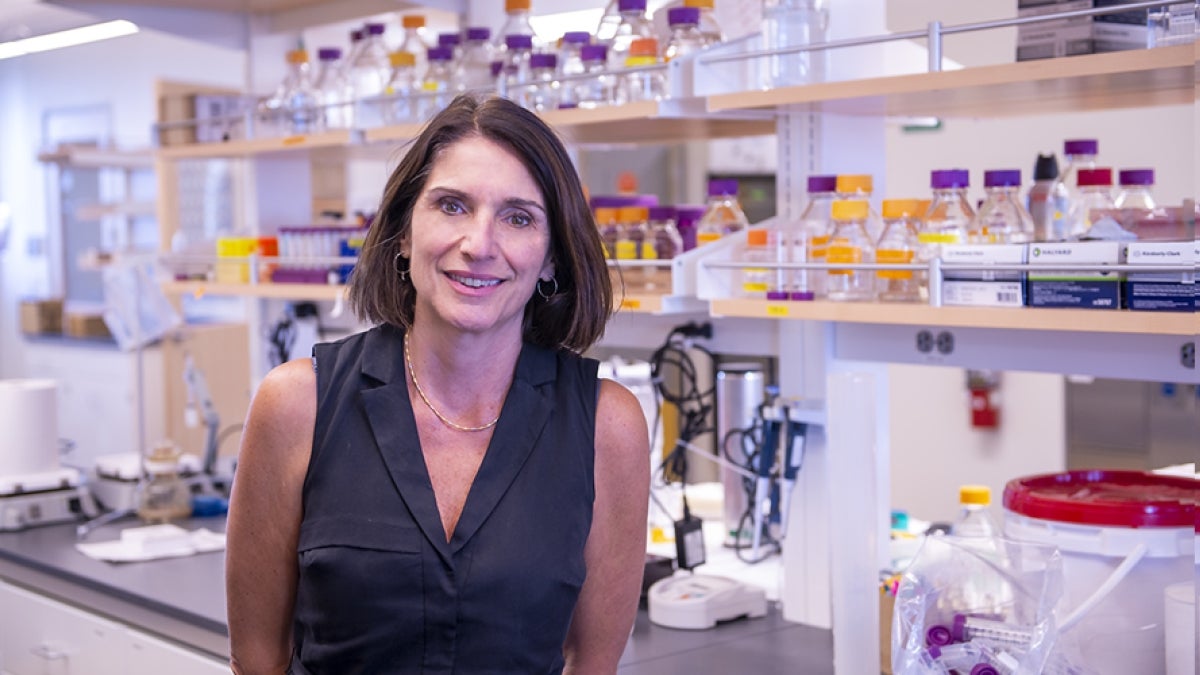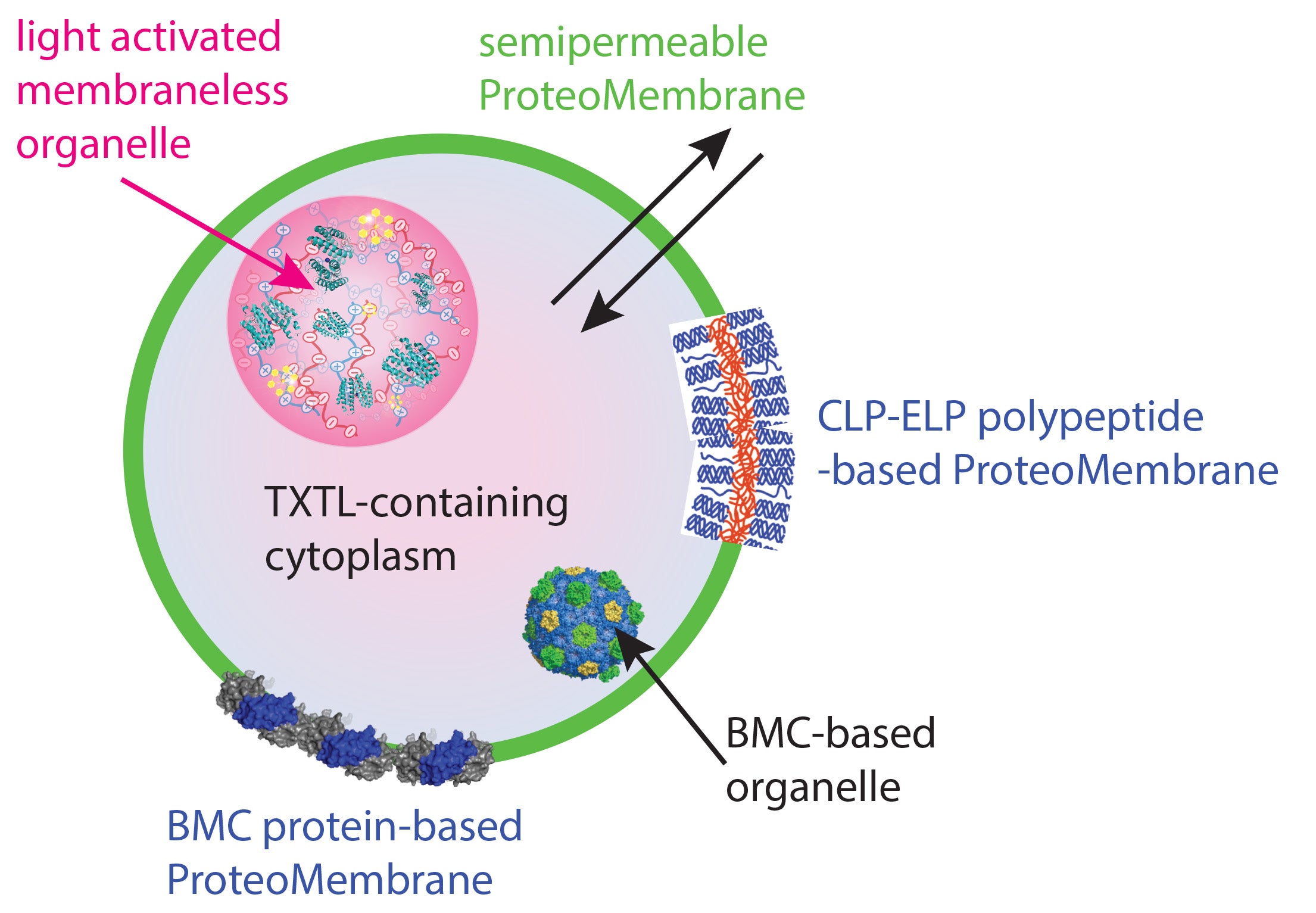ASU researcher takes on challenge to build a synthetic cell

School of Molecular Sciences Professor Giovanna Ghirlanda
The challenge of designing a synthetic artificial cell has been accepted by a team of researchers from institutions across the country, including Giovanna Ghirlanda, professor in the School of Molecular Sciences at Arizona State University. Ghirlanda will lead the protein design, engineering and catalysis aspects of the project.
Last spring, Ghirlanda attended an Ideas Lab organized by the National Science Foundation (NSF). Ideas Labs are intensive workshops focused on finding innovative solutions to grand challenge problems. The goal of this Ideas Lab was to facilitate the generation and execution of innovative research projects aimed at designing, fabricating and validating synthetic cells. The synthetic cell project is a subsection of one of NSF’s 2017 Big Ideas, the "Rules of Life."
The Rules of Life Big Idea project is aimed at elucidating and harnessing the sets of rules that predict an organism's observable characteristics. Understanding the rules that govern extant life may allow the creation of new forms of life from scratch out of nonliving materials and facilitate new ways to produce biofuels, computing devices and pharmaceuticals. Integral to this effort is examining the potential societal and ethical impact of generating synthetic cells, calling for the involvement of social scientists and philosophers in the research teams. The NSF has committed $36 million to the Rules of Life Big Idea and Ghirlanda's project is one of the first to receive funding from this initiative.
Cells are composed of proteins, lipids, nucleic acids and glycans. Nucleic acids store the information necessary to make proteins, which are the cells workhorses. Proteins catalyze all chemical reactions in the cell and also have an important structural role. Lipids compose the external and internal membranes that define the boundaries of the cell.
The idea and question raised at the workshop from Ghirlanda’s team: Is it possible to engineer functioning cells that are made up entirely of proteins and nucleic acids, but no lipids? In other words, a "fat-free" cell?
Cell membranes constructed from lipids control access to and from the cell and physically separate the various cell functions. However, it is not obvious why nature chose lipids to perform these functions since they have molecular structures that lack mechanical stability and are difficult to engineer. Ghirlanda proposes to replace the lipids with proteins. In contrast to lipids, proteins can form folded structures determined via patterns of ion pairing, hydrogen-bonding, or hydrophobicity that are in turn controlled by their amino acid sequence. Proteins can also catalyze specific chemical reactions, either autonomously or by incorporating metals and cofactors. In this way proteins can be designed that are structurally rigid and have physical and chemical propeties that can be controlled and engineered.
Eliminating lipids would simplify the metabolic demands on a minimalist synthetic cell, and replace the indistinct interface with a programmable, functional one. Functions such as energy transduction, as well as ion and small molecule transport, could be directly encoded into the proteins that make up the physical barrier.
Schematic illustration of ProteoCell components to be generated in the proposed work.
Constructing cells in this way directly addresses one of the most basic molecular-level questions concerning the Rules of Life, which is the role and function of lipids and proteins. The ability to design and manufacture viable synthetic cells would also open the door to important new applications. For example, synthetic cells coulds be used as bioreactors to make new functional biomaterials and sustainable biofuels, or synthesis of organic chemicals could be performed under environmentally friendly conditions. Artificial cells could also be used to engineer new organs, or to generate artificial symbiosis with existing organisms, for example, in soil nutrification. The study of synthetic cells, and of the processes used in their creation, could also provide insight into the origin and evolution of life on Earth and, possibly, reveal the hallmarks for extraterrestrial life.
“Our project will provide new understanding of the limits and capabilities of cellular life,” Ghirlanda said. “And it will enable streamlined biosynthesis in simplified cellular factories.”
The other investigators working on the project with Ghirlanda are Christine Keating (Pennsylvania State University), who will study the physical chemistry of the cell interfaces and phase separation; Cheryl Kerfeld (Michigan State University), who will work on protein microcompartments and biophysical characterization; Vincent Noireaux (University of Minnesota), who will perform quantitative studies on cell-free expression; Millicent Sullivan (University of Delaware), who will perform biomaterial design and peptide assembly; and Barbara Harthorn (University of California-Santa Barbara), who will provide guidance in assessing and responding to public perception of the project.
Professor Ian Gould contributed to this story.
More Science and technology

Indigenous geneticists build unprecedented research community at ASU
When Krystal Tsosie (Diné) was an undergraduate at Arizona State University, there were no Indigenous faculty she could look to…

Pioneering professor of cultural evolution pens essays for leading academic journals
When Robert Boyd wrote his 1985 book “Culture and the Evolutionary Process,” cultural evolution was not considered a true…

Lucy's lasting legacy: Donald Johanson reflects on the discovery of a lifetime
Fifty years ago, in the dusty hills of Hadar, Ethiopia, a young paleoanthropologist, Donald Johanson, discovered what would…
